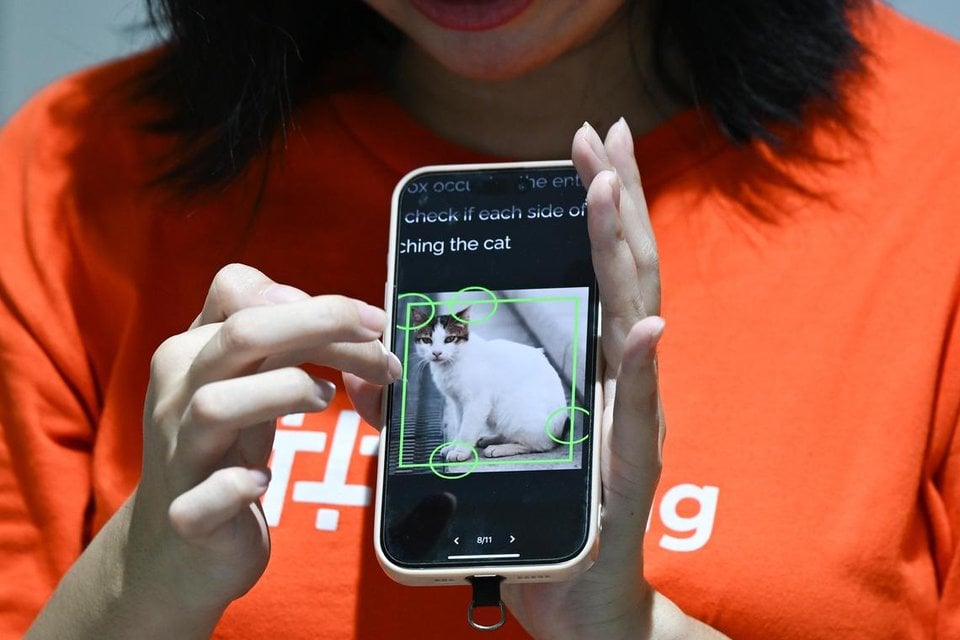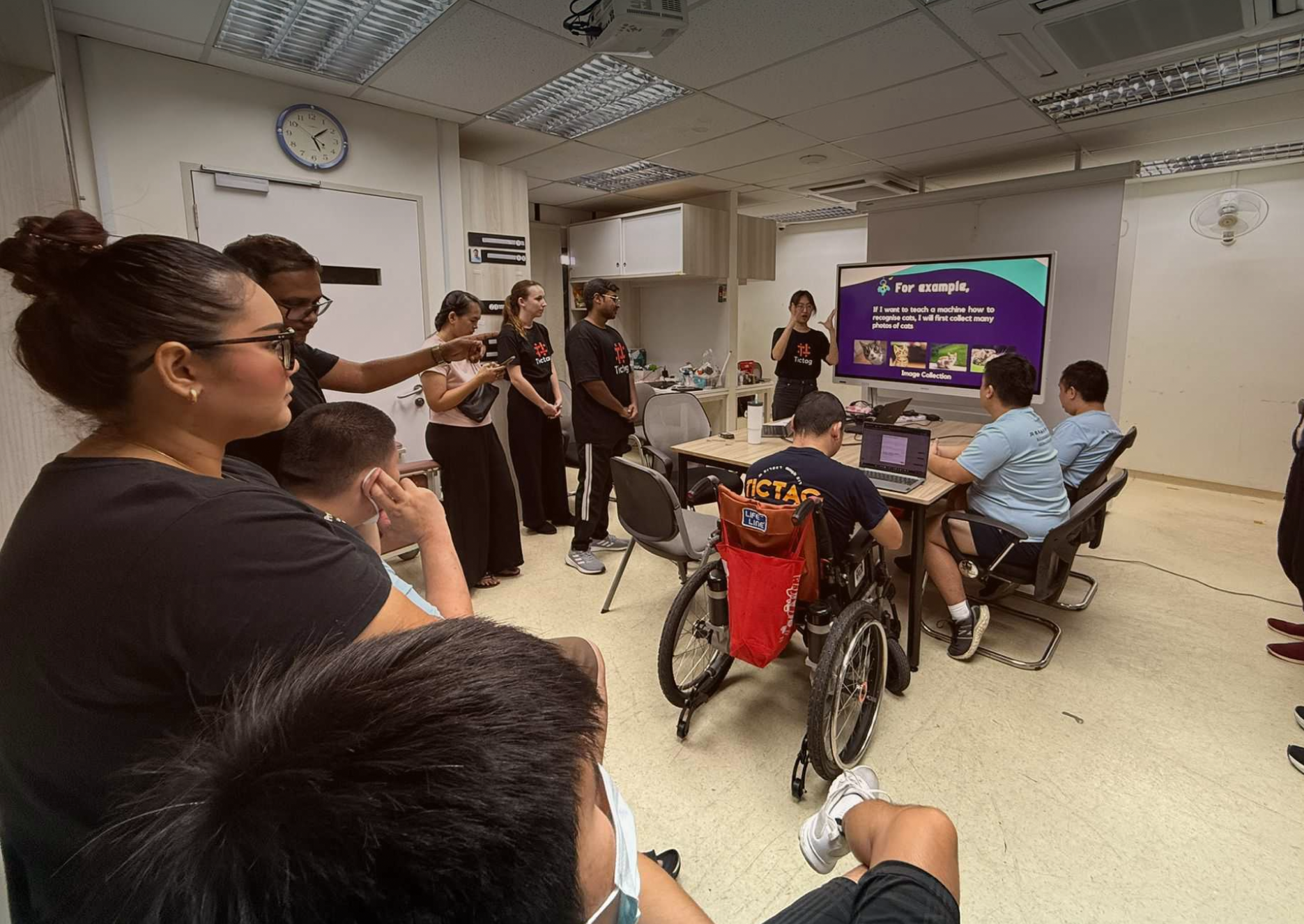The world of Artificial Intelligence (AI) prioritises efficiency, accuracy, and high performance. The wider social impacts of AI are not often considered in its development, but as AI begins to be involved into much of our daily lives. Generational, educational, and economic factors have been shown to play a significant role in who is served or sidelined by its use.
Vulnerable communities, such as Persons with Disabilities (PwDs), low-income families and seniors, Single mothers, migrant workers, and refugees, often bear the brunt of AI-driven job disruption, yet are routinely overlooked when it comes to accessing its rewards. Inclusive AI development, where vulnerable communities are engaged as co-creators, is essential to ensuring AI supports, rather than harms, those most at risk.
In this piece, we will explore the opportunities for inclusive AI development to offset AI-related job displacement, improve AI accuracy and accountability, and foster the equitable distribution of AI benefits.
.jpg?width=1600&height=1200&name=PHOTO-2024-02-16-17-36-54%202%20(1).jpg)
Alongside the numerous benefits and efficiencies of AI, it undeniably has many people concerned about job security and what the future of work will look like. A recent survey of 500 Singaporeans aged 21 – 74 years old found that 4 in 10 people think AI is likely to replace their current job in the next 5 years (Ipsos, 2023).
Who is vulnerable?
These concerns are exponentially more real for individuals of vulnerable communities, for whom the resources to keep up with rapid workplace change are not available. Factors that escalate this include a lack of understanding of Ai and digital literacy , which is mainly prevalent in older adults and people with low education or income (Duerinckx et al., 2024).
For low-wage migrant workers who have historically played a critical role in Singapore’s economy, PwDs that occupy jobs involving low-skill repetitive tasks such as warehouse work, clerical roles, and customer service, the increasing automation of such roles makes these individuals extremely vulnerable to job displacement (Lung, 2024; Schwabe & Castellacci, 2020).

However, AI has enabled the generation of many previously unavailable avenues for employment for members of vulnerable communities. AI-boosted tools such as translation and language options, automatically generated transcriptions and advancements in assistive technologies for PwDs have all made elements of the labour market more accessible (Bansak & Paulson, 2024; Guo et al., 2020). A significant area where Tictag foresees an opportunity to offset the AI-related job displacement for vulnerable communities is in AI development.

Participatory AI, the practice of engaging diverse stakeholders in AI development and deployment - aims to capture different perspectives and balance the AI tools developed to facilitate self-determination and community empowerment (Birhane et al., 2022). When AI outcomes involve vulnerable communities, their participation in the early-stage design or testing process improves algorithm performance and accuracy, advancing goals of AI innovation such efficiency, accuracy, and high performance by making Ai more inclusive.
The gap in digital literacy between vulnerable groups and conventional AI developers can be narrowed through efforts to reskill and upskill vulnerable group members, ensuring they are not left behind by AI but instead uplifted to be active in its improvement. This can be supported by the growing number of roadmaps and recommendations on how to integrate clients with limited to no prior knowledge of AI into co-creation opportunities (Duerinckx et al., 2024; Hsu et al., 2022).
Creative methods of facilitation can be especially effective, such as through gamified learning when used alongside accessibility tools (Boubakri & Nafil, 2025). This is what Tictag aims to foster through our app; an approachable interface for vulnerable communities to begin understanding and using AI so they can contribute to its development.
.png?width=1080&height=1350&name=image%2070%20(1).png)
Sources
Bansak, K., & Paulson, E. (2024). Outcome-Driven Dynamic Refugee Assignment with Allocation Balancing. Operations Research, 72(6), 2375–2390. https://doi.org/10.1287/opre.2022.0445
Birhane, A., Isaac, W., Prabhakaran, V., Diaz, M., Elish, M. C., Gabriel, I., & Mohamed, S. (2022). Power to the People? Opportunities and Challenges for Participatory AI. Equity and Access in Algorithms, Mechanisms, and Optimization, 1–8. https://doi.org/10.1145/3551624.3555290
Boubakri, M., & Nafil, K. (2025). Gamification solutions for persons with disabilities: a systematic literature review. Universal Access in the Information Society, 24(2), 1009–1035. https://doi.org/10.1007/s10209-024-01170-7
Duerinckx, A., Veeckman, C., Verstraelen, K., Singh, N., Van Laer, J., Vaes, M., Vandooren, C., & Duysburgh, P. (2024). Co-creating Artificial Intelligence: Designing and Enhancing Democratic AI Solutions Through Citizen Science. Citizen Science: Theory and Practice, 9(1). https://doi.org/10.5334/cstp.732
Guo, A., Kamar, E., Vaughan, J. W., Wallach, H., & Morris, M. R. (2020). Toward fairness in AI for people with disabilities SBG: a research roadmap. ACM SIGACCESS Accessibility and Computing, 125, 1–1. https://doi.org/10.1145/3386296.3386298
Hsu, Y.-C., Huang, T.-H. ‘Kenneth,’ Verma, H., Mauri, A., Nourbakhsh, I., & Bozzon, A. (2022). Empowering local communities using artificial intelligence. Patterns, 3(3), 100449. https://doi.org/10.1016/j.patter.2022.100449
Ipsos. (2023, June 12). AI is making Singaporeans and most Asian markets nervous about job security. Ipsos.
Lung, T. (2024, April 17). Artificial Intelligence and the Future of Singapore’s Foreign Workforce. Center for Strategic and International Studies.
Schwabe, H., & Castellacci, F. (2020). Automation, workers’ skills and job satisfaction. PLOS ONE, 15(11), e0242929. https://doi.org/10.1371/journal.pone.0242929
Share this
You May Also Like
These Related Stories

Building Confidence with AI - Together with ABLE

Building an Inclusive Future with SPD, One Tag at a Time





No Comments Yet
Let us know what you think